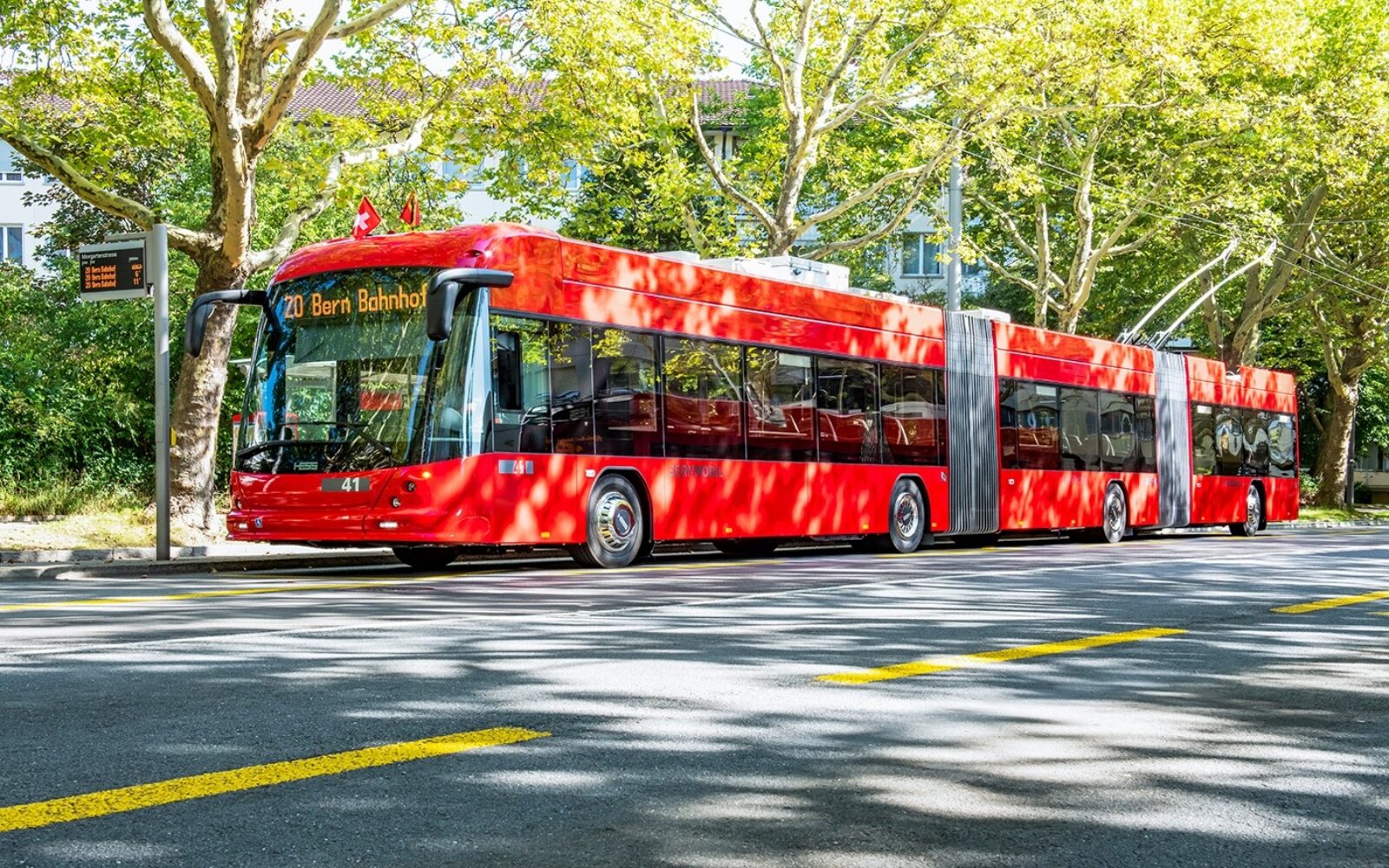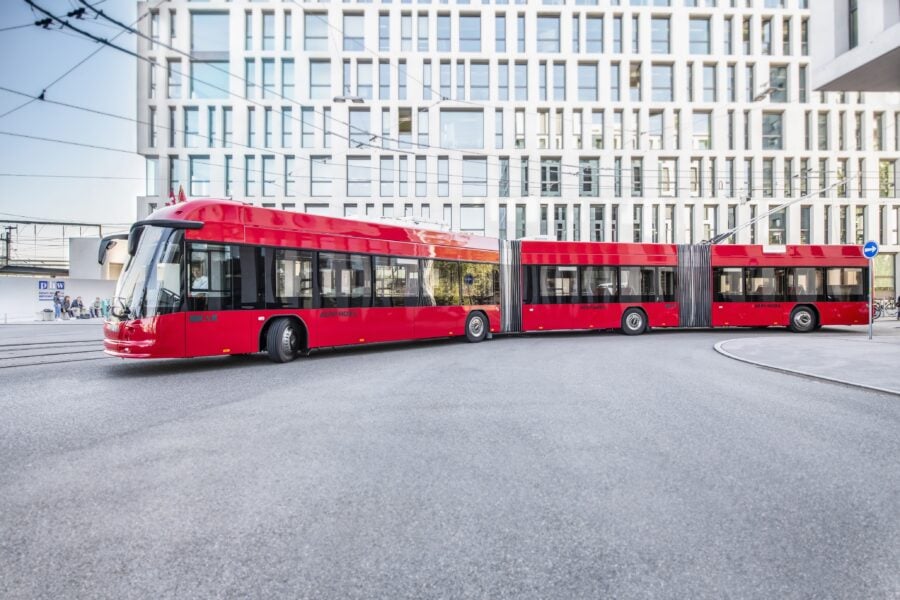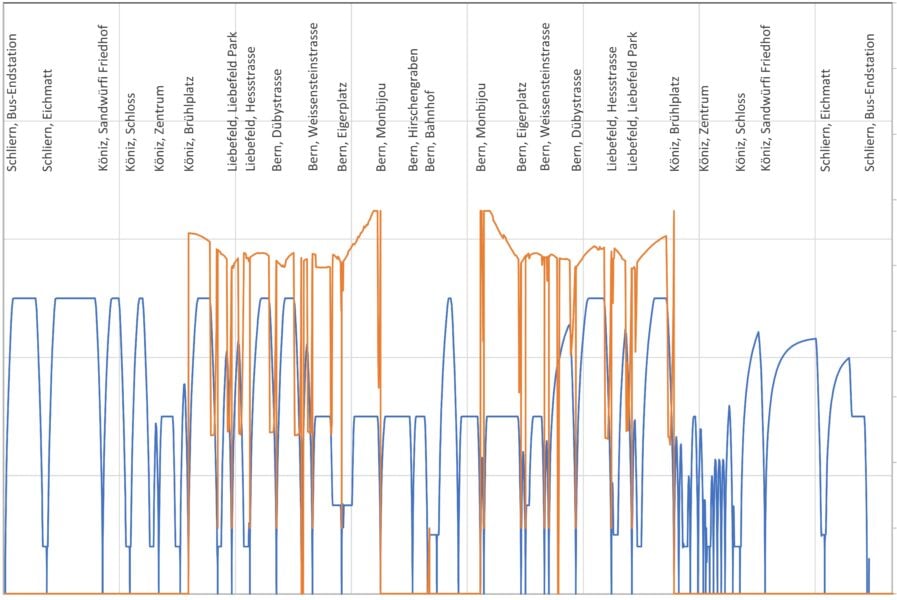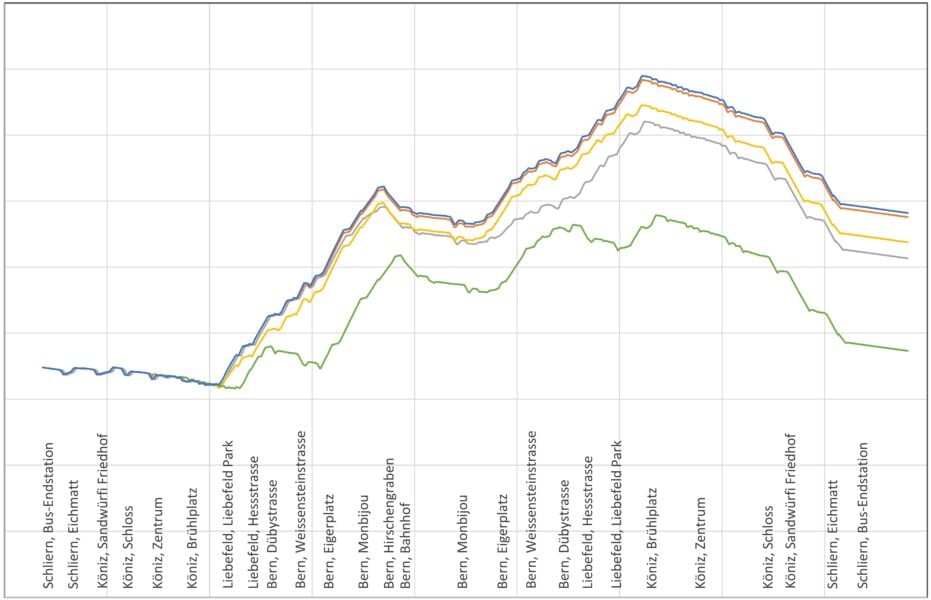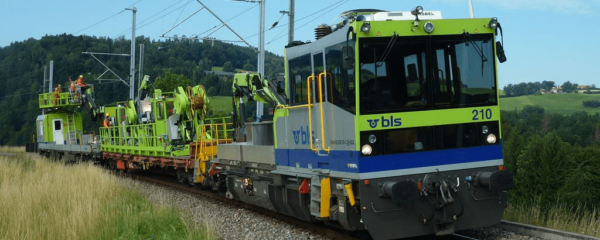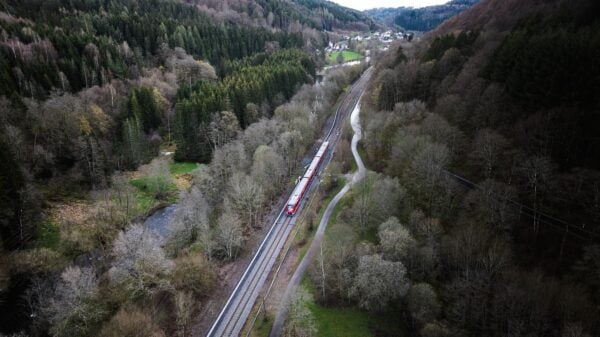Our contribution
Enotrac’s responsibility as part of the project team, which consisted of transport planners, civil engineers and electrical engineers, was for traction and electrification. Initially, in a basic study commissioned by the Canton of Bern and the Regional Conference Bern-Mittelland (RKBM) together with the City of Bern, the municipality of Köniz and BERNMOBIL, suitable solutions with regard to the traction concept and vehicle size for this line branch were determined.
The following drive concepts were considered:
- E-bus night charging at a line-independent location (e.g. garage/depot)
- E-bus with charging station at the terminal stop
- E-bus with en route fast chargers at stops (intermediate charging stations)
- Trolleybus with partial overhead line
The trolleybus with partial overhead contact line was identified as the most promising solution, which is where part of the route is equipped with a catenary system, and for the remaining part of the route the bus is powered by battery.
Subsequently, three feeding variants identified in the initial basic study were examined in detail by the Enotrac experts using Fabel simulations. The three variants differed in the degree of electrification, i.e. in the length of the overhead line, and in the number and location of rectifiers and charging infrastructure. For the investigation, a model of line 10 from Bern railway station to Köniz Schliern was developed for dynamic load flow calculations. This model was then used to simulate various network switching and operating scenarios. Using these simulations, the energy storage dimensions, the voltage stability along the electrified line sections, the load on the rectifier systems and charging infrastructures as well as on the feeder and return cables and overhead line system were determined. Based on these results, the planning of a feeding variant to be effectively implemented could be started.
The study was also presented at the dcrps conference 2022 in Leipzig.
-
Customer
Bernmobil
-
Period
2020 – 2026
-
Location
Bern, Switzerland
Our services in the project
